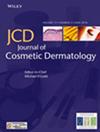30% Supramolecular Salicylic Acid Improved Symptoms and Skin Barrier in Papulopustular Rosacea
Abstract
Background
Rosacea is a chronic skin condition that affects millions of people worldwide, and its management continues to pose a significant challenge in dermatology.
Aim
In this study, we investigated the efficacy and safety of 30% supramolecular salicylic acid (SSA) as a treatment for papulopustular rosacea, with a particular focus on improving skin lesions, reducing persistent erythema, and enhancing skin barrier function.
Methods
Thirty-four patients diagnosed with papulopustular rosacea were randomly divided into an experimental group treated with 30% SSA and a control group receiving a placebo. Clinical outcomes were evaluated based on lesion reduction rates, investigator severity assessment (ISA) scores, VISIA red area scores, and skin barrier, including trans-epidermal water loss (TEWL), sebum levels, stratum corneum hydration, and pH values.
Results
A total of 34 patients were collected for both the experimental and control groups, with no statistical differences in age or disease severity between the groups (p > 0.05). The effective rate was 68.75% in the experimental group (p < 0.01). After treatment, the ISA score was 1.75 ± 0.68 in the experimental group and 2.40 ± 0.83 in the control group, indicating significant improvement (p < 0.05). The improvement rate of the VISIA redness score was 25.1% in the experimental group (p < 0.01). Among the 17 patients who underwent skin barrier function testing. Skin hydration significantly improved on left cheek (p < 0.05), right cheek (p < 0.01), and nose (p < 0.05) after 30% SSA treatment in experimental group. Sebum levels were significantly reduced on both cheeks and forehead (p < 0.05). No statistical differences were observed in other locations. Skin TEWL and pH value showed no changes.
Conclusion
30% SSA reduced papules and pustules in rosacea, improved persistent erythema, and enhanced stratum corneum hydration in the 30% SSA-treated group compared to the placebo group. No significant differences were observed in TEWL and skin pH values between the two groups. Our findings suggest that 30% SSA is an effective and safe option for managing papulopustular rosacea, offering a well-tolerated alternative to traditional treatments.


 求助内容:
求助内容: 应助结果提醒方式:
应助结果提醒方式:


